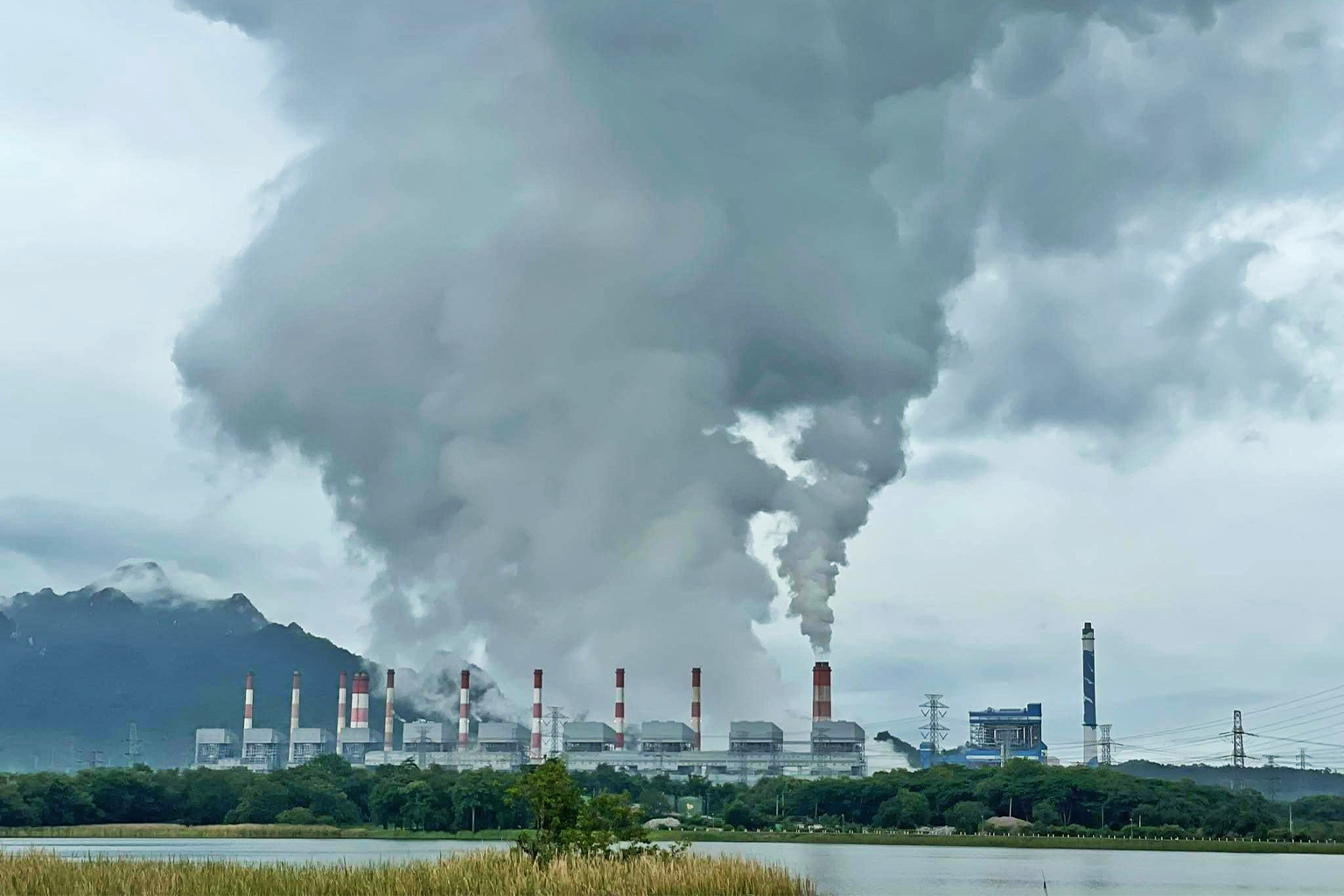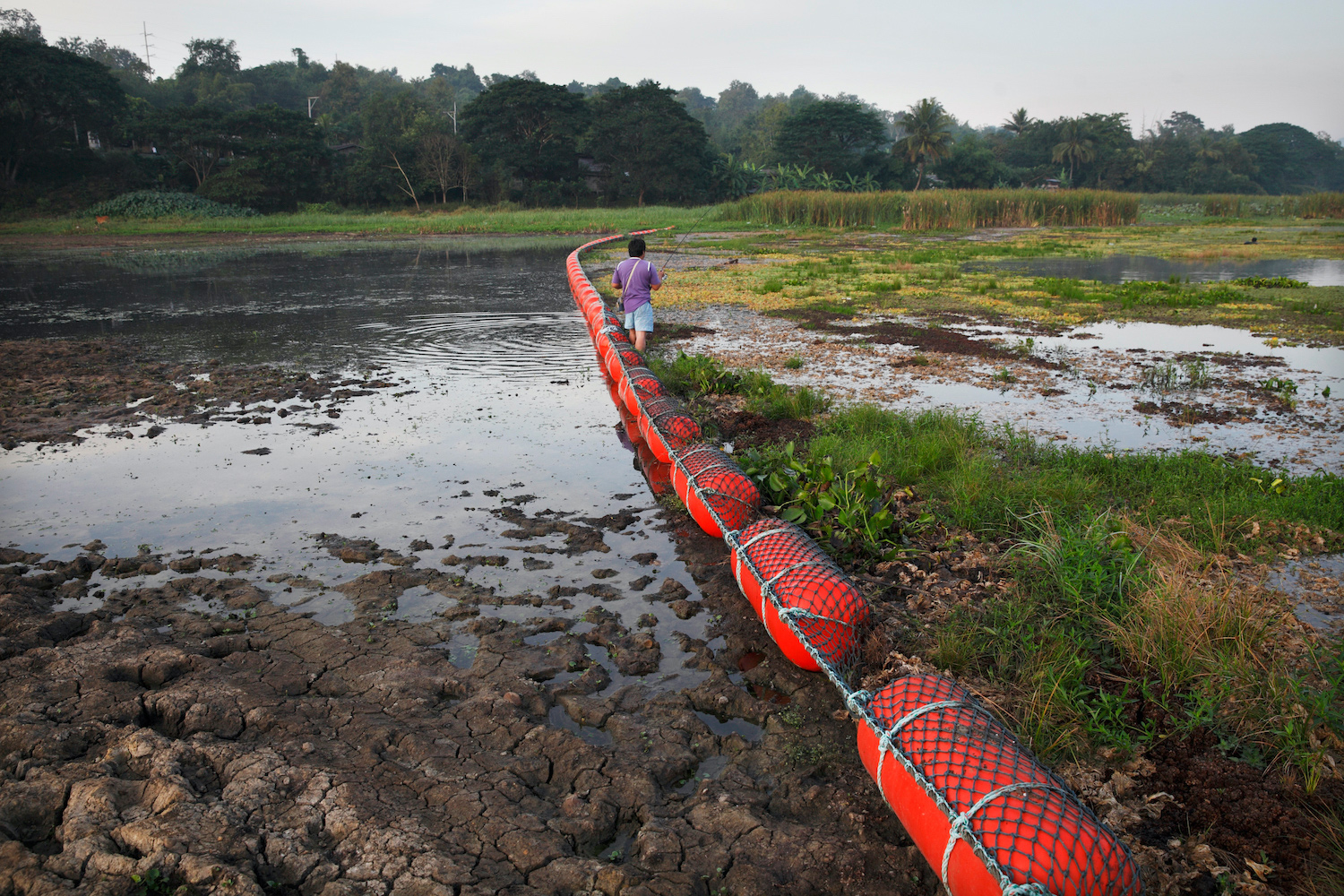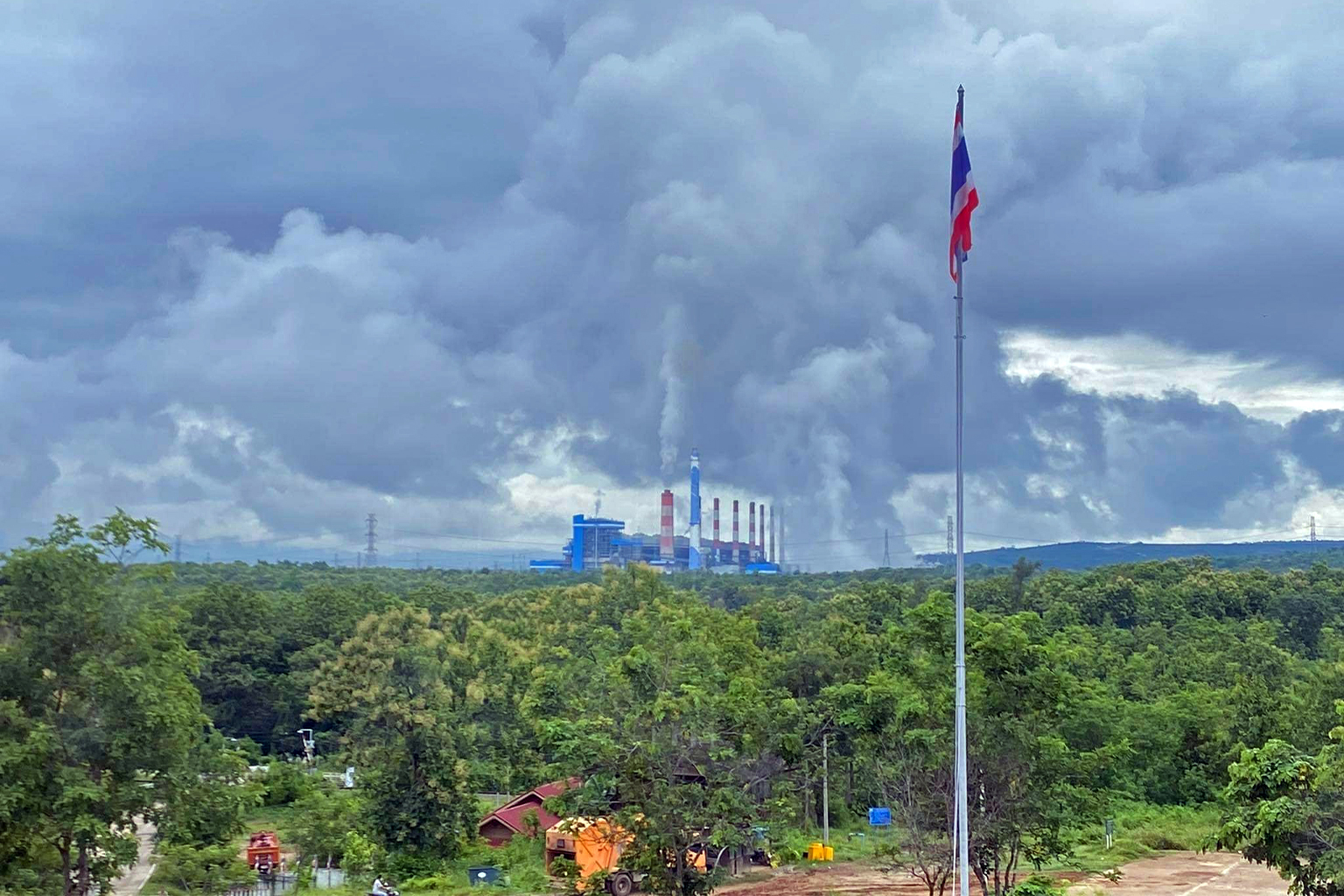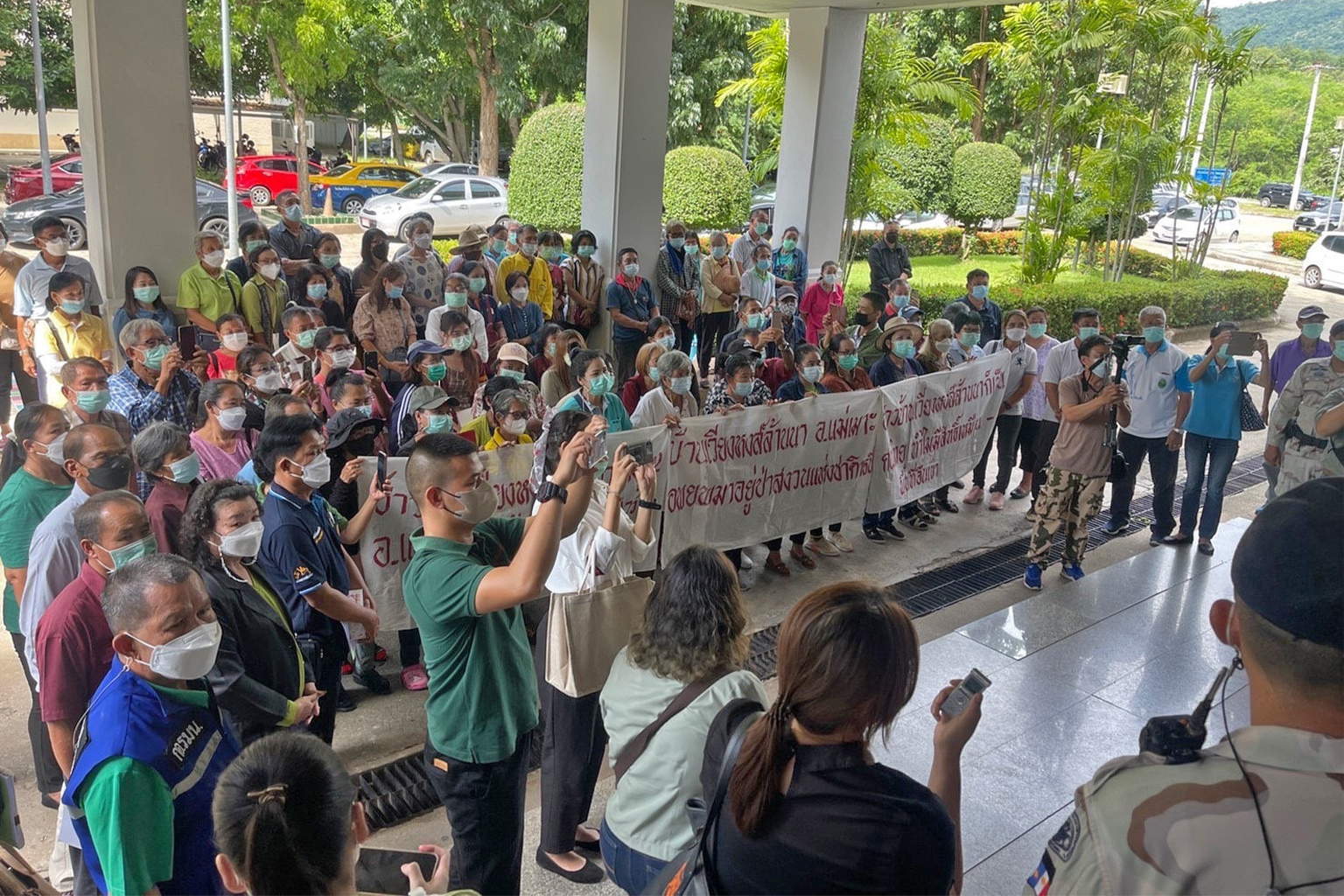- Despite its declaration of ambitious emissions reductions targets, Thailand is on track to build four new coal-fired power generators by 2034.
- Two of the generators will add to an existing plant in Mae Moh, which is powered by coal from an adjacent mine.
- Residents say the Mae Moh power station and mine have caused illness and pollution, with the country’s Supreme Court ruling in their favor in 2015 and ordering the state-owned utility to pay compensation.
- Two other generators are planned for as-yet-unnamed locations in the country’s east and south.
In November 2021, during the COP26 climate summit in Glasgow, the Thai delegation announced ambitious plans to achieve carbon neutrality by 2050 and net-zero greenhouse gas emissions by 2065.
Just five months later, the country is moving toward adding four new coal-fired power generators to its grid.
The cabinet has already approved the first two plants, twin generators that together will have an installed capacity of 660 megawatts. They are scheduled to begin construction this year and operate from 2026 to 2050, and will form part of a series of coal-powered generators in the Mae Moh power plant. The plant currently has 10 generators with a combined capacity of 2,200 MW, and is powered by coal from an adjacent 2,880-hectare (7,116-acre) open-pit lignite mine.
The country’s power development plan for 2018-2037 also calls for another two 1,000-MW coal plants, though their exact locations have not yet been publicly specified. One, in the country’s east, is scheduled to go into operation in 2033. Another, in the south, will commence a year later. Both are slated to operate for 25 years.
As countries around the world, and in the region, increasingly recognize the need to phase out coal, Thailand looks to be moving toward the fossil fuel, retaining more than 6,000 MW of coal capacity within its 56,000-MW annual supply system, even as it pledges to cut emissions.

‘Low-cost energy’
The Electricity Generating Authority of Thailand (EGAT), a state-owned enterprise and the country’s sole lignite miner, says coal-fired power plants are necessary to support “low-cost electricity” and avoid power shortages in years to come.
However, research conducted by a team of Thai academics in collaboration with Greenpeace in October 2021 casts doubt on these explanations. They found that Thailand already produces far more electricity than it needs, with generating capacity exceeding peak demand by as much as 13,800 MW, or a 43.5% surplus. They suggested that even if coal was completely phased out by 2027, the country would still have reserve capacity of 15%, in line with the level of reserves recommended in the U.S.
“The country has such a high surplus, to the extent that it can stand without any new power plants of all kinds for the next eight years,” says Chuenchom Sangarasri Greacen, an independent energy researcher who has been tracking Thailand’s energy policies for more than 20 years.
The government says adding new coal generators like the new Mae Moh project will not affect emissions goals, since the plant will incorporate state-of-the-art, efficient technologies such as ultra-supercritical steam generators.
However, researchers say there are limits to these so-called “clean” generators. “This new and highly acclaimed technology aids in better combustion but will still emit carbon dioxide into the atmosphere,” Greacen says. Additionally, any calculation of the impact of new generators needs to factor in the emissions of toxic substances like methane, lead and mercury during the mining and processing of the fuel.

A long, haunting story
In Mae Moh, in the mountains of northern Thailand’s Lampang province, the plans to build new coal-fired generators threaten to reignite long-simmering issues.
Mae Moh is not only the oldest and largest coal-fired facility in Thailand, it is also the site of a 30-year battle between Thailand’s state-owned energy company and residents who say the mine and the power plant have made them ill.
Lignite mining in Mae Moh began in the 1950s, and the first generator started running on the site in the 1960s. In 1978, the cluster of generators was installed, running 24 hours a day.
The results, locals say, were disastrous. “Coal dust and toxic chemicals have been carried by winds into rivers, reservoirs, and nearby communities, including the reservoir that supplies drinking water for us,” Maliwan Nakwiroj, a Mae Moh resident since 1984, tells Mongabay. “The consistent of rock blasting is unbearable.”


In October 1992, when cold weather trapped pollution in the valley around the plant, residents noticed leaves in the area were scorched, the rain fell dusty, and their neighbors and family members fell ill.
One local hospital recorded more than 200 patients “suffering from respiratory diseases caused by air pollution released from Mae Moh power plant during October 3-5, 1992. Most of the people were ill with upper and partial respiratory diseases.” The provincial public health office recorded overall patient numbers of more than 2,000 within a few days.
“My less-than-a-year-old toddler suffered a severe cough and a painful cry,” Nakwiroj recalls. “I was also so sick and weak that I needed to press myself against the wall while carrying him.” All of Nakwiroj’s family members eventually fell ill, as did her neighbors, she says.
Some 2,400 families were evacuated to pave way for the mine years earlier, but Nakwiroj’s village didn’t fall within the evacuation zone, even though it sat just 300 meters (330 yards) from the mine pit and the line of generators. “They said we were not in the mine area, just close.”
When they asked EGAT to take responsibility, they were told the plant had not released any toxins or other hazards. Mongabay tried to reach the EGAT spokeswoman by telephone and email, but has yet to receive a response.

23 years for justice
Community members were determined to fight for compensation. Ultimately, though, only 131 of them could afford to make the nine-hour trip to Bangkok and pay for specialist medical tests, which found the villagers were suffering pneumoconiosis caused by sulfur dioxide, a substance emitted by coal-fired power plants.
The villagers launched a long battle both in court and on the street. “We went everywhere we could imagine,” Nakwiroj says. “We camped out in front of government buildings, again and again, we met with National Human Rights Commission and with every prime minister we had in the past 20 years. We filed several hundred letters to all the related entities we could think of, calling for justice.”
After nine years, EGAT agreed to relocate 900 families from four villages, paying resettlement compensation. Compensation for health issues, however, took 23 years.
In 2015, the Supreme Court ruled in the villagers’ favor, saying that EGAT had to pay damages for health deterioration, physical and mental grievances, as well as compensation for medical expenses and damage to crops and land. In total, the company was ordered to pay 25 million baht (around $768,000 at the time), plus 7.5% interest, to be split between the 131 villagers who had been able to obtain medical tests.

For many, however, it came too late. More than 30 of the plaintiffs have died, including Nakwiroj’s father. “People call it a victory after a long fight; to me it is not,” she says. “There are thousands of us who could not afford this justice. Those who were sick but could not find medical proof because they could not pay the bill.”
Even for those eligible for compensation, problems remain. Hundreds still await resettlement. Around 1,000 families, including Nakwiroj’s, were evacuated to land gazetted as national forest, where they have struggled for two decades to obtain legal title.
“We used to have rights over our land,” Nakwiroj says. “Now we live in the national forest, risking being charged under the law.” On May 21, 2022, she and hundreds of her neighbors, met with local officials to demand a clear timeline for being granted legal rights over the land.
Exactly four days later, the Thai cabinet approved the construction of the two new coal generators in Mae Moh.

The pipeline is always open
Mae Moh is the country’s largest coal mine, but not the only site that has faced controversy over coal.
EGAT also wanted to build two coal-fired power plants in coastal areas in the southern provinces of Songkhla and Krabi. The proposed plants came up against strong opposition from locals and environmental groups.
After 10 years, both of these projects are now on hold — deleted from the national power development plan.
In June 2022, Greenpeace, which had a leading role in the campaign against the coal plants, celebrated their removal from the plan as a victory.
But in that same national power development plan, there are two unnamed coal-fired plants standing patiently in line.
For Greacen, moving ahead with coal plants is a big mistake, given the increasingly urgent calls to cut global emissions.
“There’s a high possibility that the coal plants will be forced to shut down by 2040,” she says. “The only way they can move on with fossil fuel is to find carbon capture and storage, which would demand skyrocketing investment to bring carbon under the earth and bury it somewhere. That would bring not just huge investment but the dispute of where to store those toxic assets. So why bother doing the impossible task with huge money when we can just simply stop it now?”
According to the World Bank, there are currently 36 carbon taxes and 32 emission trading systems operating in 46 national jurisdictions around the world. Greacen sees this as a looming financial problem for any country that relies on coal. “Having giant coal-fired plants in possession will become a threat, not an asset. ”
Back in Mae Moh, Nakwiroj and her neighbor have returned from yet another meeting with the National Human Rights Commission. This time they weren’t just looking for redress for old harms: they asked to be protected from the impact of the new two coal-fired plants. The old difficulties are yet to be solved, but they are now bracing for new ones.
Banner image: In this 2013 image, rice farmer Pranee Inpanyo harvests one of her rice fields. Her village is located in the vicinity of Mae Moh power plant, and she complains that much of her crop has to be discareded due to damage from pollution. Image © Luke Duggleby / Greenpeace.
FEEDBACK: Use this form to send a message to the author of this post. If you want to post a public comment, you can do that at the bottom of the page.
